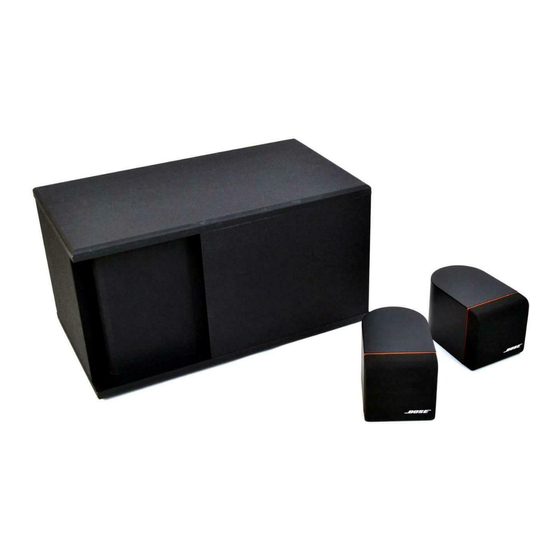Bose Acoustimass 3 Series Manuel - Page 8
Parcourez en ligne ou téléchargez le pdf Manuel pour {nom_de_la_catégorie} Bose Acoustimass 3 Series. Bose Acoustimass 3 Series 43 pages. Powered speaker system
Également pour Bose Acoustimass 3 Series : Manuel du propriétaire (17 pages), Manuel du propriétaire (10 pages), Manuel d'entretien (42 pages)

The two primary windings of the transformer are wired in series for 230V operation, and in
parallel for 115V operation, depending on the position of the customer accessible voltage
select switch. If the system is accidentally energized at 230V with the switch in the 115V
position, the replaceable fuse (F1 located on the Main PCB assembly), will open the circuit
within two minutes. This will be the only damage to the system.
A non-serviceable thermal fuse is located inside the transformer to limit the maximum
temperature to 145 °C under abnormal conditions. However, in most cases the external fuse
(F1) should fail before the internal transformer thermal fuse. The thermal fuse can be checked
by measuring the continuity between pins 1 and 4 (black and white wire) of the primary
connector. This connector is located on the Main PCB.
2. Differential Input Stage
Audio input applied at the phono jack (J8) connects directly to the right (left) differential amplifier
buffer. This stage accomplishes several functions:
• Provides rejection of common-mode interference (such as hum) that might be picked up
by the long audio cable between the AM-3P II and Lifestyle
• Provides input overload and ESD protection through diodes (D101-D104)
• Removes radio frequency interference through C103, C125, C127
• Provides DC blockage by C101,102
• Provides a 6 dB gain through op-amp U101.
3. Compressor/Treble Stage
U102 (pins 1, 2, 3) with potentiometer VR2 at the center position, operates as a conventional
inverting operational amplifier stage with a gain of 6 dB. However, when voltage overload is
present at the speaker outputs, transistor array U1 (pins 1, 2, 3) receives a turn-on signal from
the compressor detect stage. Under this condition, the transistor acts as a variable resistor to
ground, and with R107, forms a resistor divider network that attenuates the audio signal. The
amount of attenuation and timing action is carefully controlled by the compressor detect stage
(to be discussed later).
Potentiometer VR2 adjusts the amount of treble boost or cut. In the full counterclockwise
position, the wiper (pin 4) shorts to pin 1. The maximum boost and cut frequency response
graph is shown in Figure 2 on page 5.
®
music center
8
